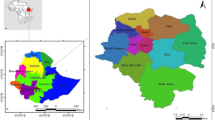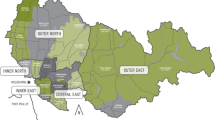Abstract
Rising demand and the potential decline in renewables resources have made energy production one of the most important challenges of the future. In hydropower plants, various factors can be the reasons to limit resources and energy supply. In this study, population and GDP, and climatic parameters (temperature and precipitation) are analyzed for the prediction of the energy demand. The innovation of this research is the Introduction of a developed algorithm called the Improved Water Strider Algorithm (IWSA). The results displayed that the improved algorithm has the faster convergence and the lowest error with the value of 1.55, 1.48, 1.44, and 0.78 in population, and GDF, temperature, and precipitation, respectively. This model has the highest correlation coefficient with the value of 0.77, 0.79, 0.8, and 80 in population, GDF, temperature, and precipitation, respectively. Also, this model with the highest correlation of 0.91, and the lowest error of 0.47 can have the best performance. Therefore, after confirming this proposed method, energy demand is predicted. The results showed that among the four input parameters of the CNN-IWSA model the precipitation parameter can have a significant effect on limiting resources and increasing demand because it can directly affect the amount and timing of energy production distribution. The results also show an increasing trend in energy demand for the next 20 years. These results can be of great help to hydrologists and energy managers in controlling and supplying energy.








Similar content being viewed by others
References
Acakpovi A et al (2020) Time series prediction of electricity demand using adaptive neuro-fuzzy inference systems. Math Probl Eng 2020:1–14
Agarap AF (2017) An architecture combining convolutional neural network (CNN) and support vector machine (SVM) for image classification. arXiv preprint https://arxiv.org/arXiv:1712.03541
Aghajani G, Ghadimi N (2018) Multi-objective energy management in a micro-grid. Energy Rep 4:218–225
Akbary P et al (2019) Extracting appropriate nodal marginal prices for all types of committed reserve. Comput Econ 53(1):1–26
Amali D, Dinakaran M (2019) Wildebeest herd optimization: a new global optimization algorithm inspired by wildebeest herding behaviour. J Intell Fuzzy Syst 37:1–14 (Preprint)
Amiripalli SS, Bobba V (2019) Impact of trimet graph optimization topology on scalable networks. J Intell Fuzzy Syst 36(3):2431–2442
Askarzadeh A (2016) A novel metaheuristic method for solving constrained engineering optimization problems: crow search algorithm. Comput Struct 169:1–12
Banerjee I et al (2019) Comparative effectiveness of convolutional neural network (CNN) and recurrent neural network (RNN) architectures for radiology text report classification. Artif Intell Med 97:79–88
Bengio Y et al (2007) Greedy layer-wise training of deep networks. In: Advances in neural information processing systems
Cai W et al (2019) Optimal bidding and offering strategies of compressed air energy storage: a hybrid robust-stochastic approach. Renew Energy 143:1–8
Chen J-F et al (2018) Forecasting monthly electricity demands by wavelet neuro-fuzzy system optimized by heuristic algorithms. Information 9(3):51
Choi C, Lee J-J (1998) Chaotic local search algorithm. Artif Life Robot 2(1):41–47
Cuevas E, Fausto F, González A (2020) The locust swarm optimization algorithm. New advancements in swarm algorithms: operators and applications. Springer, pp 139–159
Dehghani M et al (2021) Blockchain-based securing of data exchange in a power transmission system considering congestion management and social welfare. Sustainability 13(1):90
Dhiman G, Kumar V (2018) Emperor penguin optimizer: a bio-inspired algorithm for engineering problems. Knowl-Based Syst 159:20–50
Ebrahimian H et al (2018) The price prediction for the energy market based on a new method. Econ Res Ekonomska Istraživanja 31(1):313–337
Emary E, Zawbaa HM, Grosan C (2018) Experienced gray wolf optimization through reinforcement learning and neural networks. IEEE Trans Neural Netw Learn Syst 29(3):681–694
Eslami M et al (2019) A new formulation to reduce the number of variables and constraints to expedite SCUC in bulky power systems. Proc Natl Acad Sci, India, Sect A 89(2):311–321
Fan X et al (2020) High voltage gain DC/DC converter using coupled inductor and VM techniques. IEEE Access 8:131975–131987
Ferlito S et al (2015) Predictive models for building's energy consumption: an artificial neural network (ANN) approach. In: 2015 xviii AISEM annual conference, IEEE
Geng Z et al (2020) Energy optimization and prediction modeling of petrochemical industries: an improved convolutional neural network based on cross-feature. Energy 194:116851
Ghadimi N (2015) An adaptive neuro-fuzzy inference system for islanding detection in wind turbine as distributed generation. Complexity 21(1):10–20
Gheydi M, Nouri A, Ghadimi N (2016) Planning in microgrids with conservation of voltage reduction. IEEE Syst J 12(3):2782–2790
Ghiasi M, Ghadimi N, Ahmadinia E (2019) An analytical methodology for reliability assessment and failure analysis in distributed power system. SN Appl Sci 1(1):44
Gollou AR, Ghadimi N (2017) A new feature selection and hybrid forecast engine for day-ahead price forecasting of electricity markets. J Intell Fuzzy Syst 32(6):4031–4045
Hagh MT, Ebrahimian H, Ghadimi N (2015) Hybrid intelligent water drop bundled wavelet neural network to solve the islanding detection by inverter-based DG. Front Energy 9(1):75–90
Hamian M et al (2018) A framework to expedite joint energy-reserve payment cost minimization using a custom-designed method based on mixed integer genetic algorithm. Eng Appl Artif Intell 72:203–212
Hosseini-Firouz M, Ghadimi N (2015) Financial planning for the preventive maintenance of the power distribution systems critical components using the reliability-centered approach. Int J Phys Sci 10(3):123–132
Hussain E et al (2021) CoroDet: a deep learning based classification for COVID-19 detection using chest X-ray images. Chaos Solitons Fractals 142:110495
Jaddi NS, Abdullah S (2018) Optimization of neural network using kidney-inspired algorithm with control of filtration rate and chaotic map for real-world rainfall forecasting. Eng Appl Artif Intell 67:246–259
Kankal M, Uzlu E (2017) Neural network approach with teaching–learning-based optimization for modeling and forecasting long-term electric energy demand in Turkey. Neural Comput Appl 28(1):737–747
Kaveh A, Eslamlou AD (2020) Water strider algorithm: a new metaheuristic and applications. In: Structures. Elsevier
Kaveh A, Eslamlou AD, Khodadadi N (2020) Dynamic water strider algorithm for optimal design of skeletal structures. Period Polytechn Civ Eng 64(3):904–916
Khodaei H et al (2018) Fuzzy-based heat and power hub models for cost-emission operation of an industrial consumer using compromise programming. Appl Therm Eng 137:395–405
Koehler F, Risteski A (2018) Representational power of ReLU networks and polynomial kernels: beyond worst-case analysis. arXiv preprint https://arxiv.org/arXiv:1805.11405
Kumaran VV et al (2020) An empirical analysis of factors affecting renewable energy consumption in association of Southeast Asian Nations-4 countries. Int J Energy Econ Policy 10(2):48
Leng H et al (2018) A new wind power prediction method based on ridgelet transforms, hybrid feature selection and closed-loop forecasting. Adv Eng Inform 36:20–30
Li X, Niu P, Liu J (2018) Combustion optimization of a boiler based on the chaos and Levy flight vortex search algorithm. Appl Math Model 58:3–18
Martens J, Sutskever I (2011) Learning recurrent neural networks with hessian-free optimization. In: Proceedings of the 28th International Conference on Machine Learning (ICML-11). 2011. Citeseer
Mehrpooya M et al (2021) Numerical investigation of a new combined energy system includes parabolic dish solar collector, stirling engine and thermoelectric device. Int J Energy Res 45(16436):16455
Meng Q et al (2020) A single-phase transformer-less grid-tied inverter based on switched capacitor for PV application. J Control Autom Electric Syst 31(1):257–270
Mir M et al (2020) Application of hybrid forecast engine based intelligent algorithm and feature selection for wind signal prediction. Evol Syst 11(4):559–573
Pais-Magalhaes V, Moutinho V, Robaina M (2020) Determinants of the household electricity consumption efficiency of an ageing population: Evidence for the EU-28. Energy Rep 6:415–422
Pysar N et al (2020) Gross domestic product energy intensity level as a criterion for evaluating the energy security of national economy. Int J Energy Econ Policy 10(4):424
Saeedi M et al (2019) Robust optimization based optimal chiller loading under cooling demand uncertainty. Appl Therm Eng 148:1081–1091
Scapin S et al (2016) High-resolution temperature fields to evaluate the response of italian electricity demand to meteorological variables: an example of climate service for the energy sector. Theor Appl Climatol 125(3):729–742
Sen D, Günay ME, Tunç KM (2019) Forecasting annual natural gas consumption using socio-economic indicators for making future policies. Energy 173:1106–1118
Singh P, Dwivedi P (2018) Integration of new evolutionary approach with artificial neural network for solving short term load forecast problem. Appl Energy 217:537–549
Sonmez M, Akgüngör AP, Bektaş S (2017) Estimating transportation energy demand in Turkey using the artificial bee colony algorithm. Energy 122:301–310
Van Merriënboer B et al (2015) Blocks and fuel: Frameworks for deep learning. arXiv preprint https://arxiv.org/arXiv:1506.00619
Wang Q, Wang L (2020) Renewable energy consumption and economic growth in OECD countries: a nonlinear panel data analysis. Energy 207:118200
Wang H, Wu X, Gholinia F (2021) Forecasting hydropower generation by GFDL‐CM3 climate model and hybrid hydrological‐Elman neural network model based on Improved Sparrow Search Algorithm (ISSA). Concurr Comput Pract Exp e6476
Ye H et al. (2020) High step-up interleaved DC/DC converter with high efficiency. Energy Sourc Part A 1–20
Yin L et al. (2020) Prediction and evaluation of the comfort of a passenger in a high-speed maglev system based on a neural network algorithm. In: CICTP 2020, pp 1080–1088
Yu D, Ghadimi N (2019) Reliability constraint stochastic UC by considering the correlation of random variables with Copula theory. IET Renew Power Gener 13(14):2587–2593
Zhang L, Suganthan PN (2016) A survey of randomized algorithms for training neural networks. Inf Sci 364:146–155
Author information
Authors and Affiliations
Corresponding author
Additional information
Publisher's Note
Springer Nature remains neutral with regard to jurisdictional claims in published maps and institutional affiliations.
Rights and permissions
About this article
Cite this article
Liao, S., Jimenez, G. A new optimal prediction technique for energy demand based on CNN and improved water strider algorithm: a study on socio-economic-climatic parameters. Evolving Systems 13, 759–775 (2022). https://doi.org/10.1007/s12530-021-09409-x
Received:
Accepted:
Published:
Issue Date:
DOI: https://doi.org/10.1007/s12530-021-09409-x




